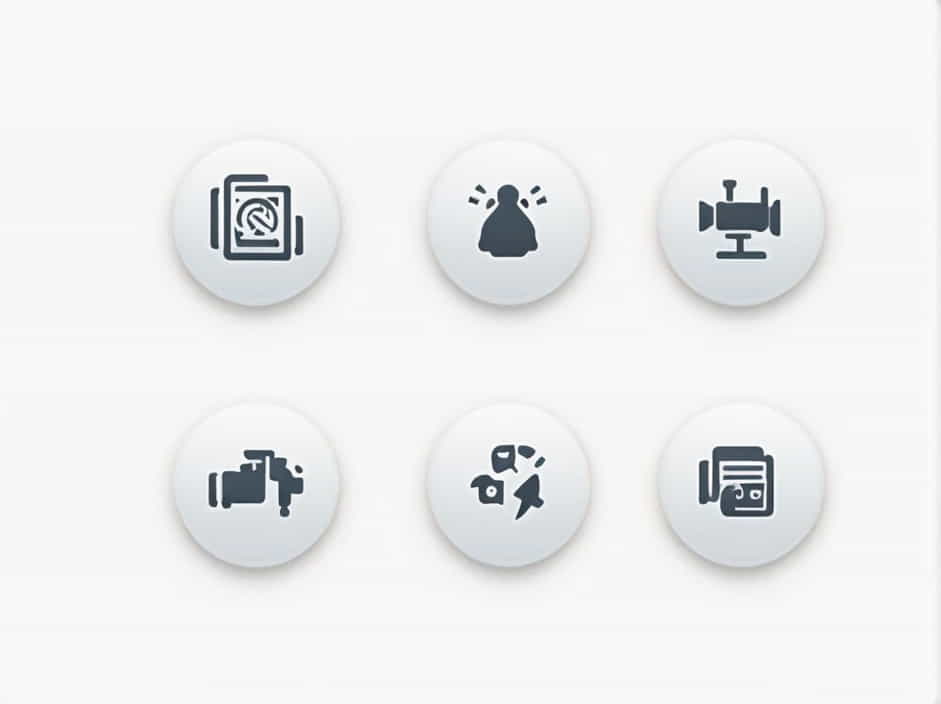Communication is an essential part of human interaction. Whether verbal or nonverbal, communication allows people to share ideas, emotions, and information. Effective communication requires several key elements to ensure that a message is clearly delivered, understood, and responded to.
In this topic, we will explore the main elements of communication, how they work together, and why each one is crucial for effective communication.
The 7 Essential Elements of Communication
1. Sender (Source of the Message)
The sender is the person or entity that initiates communication by creating and transmitting a message. The sender plays a crucial role in shaping the content and tone of the message.
To be an effective sender, one must:
- Clearly define the purpose of the message.
- Use appropriate language and tone.
- Consider the audience’s background and knowledge.
Example: A teacher explaining a lesson to students must adjust their language to match the students’ level of understanding.
2. Message (The Information Being Communicated)
The message is the content that the sender wants to convey. It can be in the form of words, gestures, images, or symbols.
A good message should be:
- Clear – Avoid ambiguity or unnecessary complexity.
- Concise – Deliver the information in a direct and efficient manner.
- Relevant – Ensure it matches the needs and interests of the audience.
Example: A business email should include all necessary details without unnecessary information that could cause confusion.
3. Encoding (Converting Thoughts into Symbols or Words)
Encoding is the process of transforming thoughts, ideas, or emotions into a format that the receiver can understand. This could be spoken language, written text, body language, or visual representations.
Factors affecting encoding:
- Choice of words and symbols.
- Cultural and contextual considerations.
- Medium of communication (spoken, written, digital, etc.).
Example: A marketing team encodes a message using an advertisement to appeal to a specific audience.
4. Channel (The Medium of Communication)
The channel is the medium used to transmit the message from sender to receiver. Different channels are suitable for different types of communication.
Common communication channels include:
- Verbal – Face-to-face conversations, phone calls, speeches.
- Written – Emails, letters, reports, books.
- Digital – Social media, websites, text messages.
- Nonverbal – Body language, facial expressions, gestures.
Example: A company uses email to send official announcements because it is a formal and documented channel.
5. Receiver (The Person Receiving the Message)
The receiver is the person or group that interprets and processes the message sent by the sender. The effectiveness of communication depends on how well the receiver understands the message.
To be a good receiver, one must:
- Actively listen or read the message carefully.
- Avoid distractions that might cause misunderstanding.
- Provide feedback to confirm understanding.
Example: A student listening to a lecture must focus and take notes to fully understand the lesson.
6. Decoding (Interpreting the Message)
Decoding is the process by which the receiver interprets and understands the message. It depends on the receiver’s background, knowledge, and experience.
Factors that influence decoding:
- Language proficiency.
- Cultural differences.
- Emotional state.
- Previous knowledge on the topic.
Example: A technical manual might be difficult to decode for someone without expertise in the subject.
7. Feedback (Response to the Message)
Feedback is the receiver’s reaction or response to the message. It helps the sender know whether the message was understood correctly. Feedback can be verbal, written, or nonverbal.
Effective feedback should be:
- Immediate – Given as soon as possible to avoid confusion.
- Clear – Express what was understood or what needs clarification.
- Constructive – Help improve future communication.
Example: In a job interview, a recruiter nodding and taking notes shows that they are engaged with the candidate’s answers.
Additional Elements That Influence Communication
1. Context (Situation or Environment of Communication)
Context refers to the background in which communication occurs. It includes the physical setting, cultural environment, and social dynamics.
Types of context:
- Physical – A classroom, office, or online platform.
- Cultural – Different cultures may interpret messages differently.
- Social – The relationship between sender and receiver (e.g., formal vs. informal).
Example: A casual conversation with a friend differs from a professional meeting with a boss.
2. Noise (Barriers to Communication)
Noise refers to any interference that distorts or disrupts communication. It can occur at any stage of the communication process.
Types of noise:
- Physical noise – Loud background sounds, technical issues in a video call.
- Psychological noise – Stress, emotional distractions.
- Semantic noise – Misunderstanding due to complex words or jargon.
Example: A phone call with a weak signal can result in unclear communication.
How to Improve Communication Effectiveness
1. Be Clear and Concise
Avoid unnecessary complexity in your message. Keep it simple and straight to the point.
2. Choose the Right Channel
Select a communication channel that suits the message and audience. A formal report may be best delivered in writing, while a personal conversation is better face-to-face.
3. Encourage Feedback
Ask for feedback to ensure that the message was understood correctly. This helps in reducing miscommunication.
4. Minimize Noise and Distractions
Ensure that external factors do not interfere with communication. Speak in a quiet environment and use clear language.
5. Adapt to Your Audience
Consider the receiver’s background, cultural differences, and knowledge level when communicating.
6. Use Nonverbal Cues Effectively
Body language, tone of voice, and facial expressions play a major role in reinforcing your message.
Effective communication is built on multiple essential elements, including the sender, message, encoding, channel, receiver, decoding, and feedback. Understanding and improving each of these components ensures that communication is clear, accurate, and impactful.
By applying best practices such as choosing the right channel, reducing noise, and encouraging feedback, you can enhance your communication skills in both personal and professional settings.
